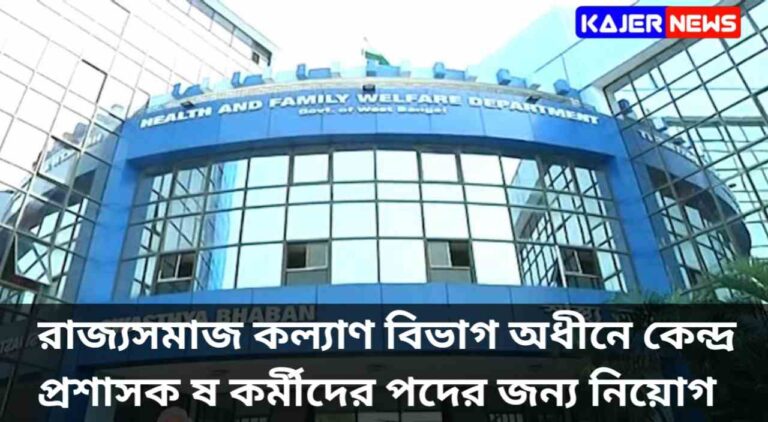Ayushman Bharat registration
Exploring Ayushman Bharat: A Transformative Initiative in Indian Healthcare
In a country as diverse and populous as India, healthcare accessibility has always been a pressing issue. With a population exceeding 1.3 billion people spread across urban centers and rural villages, ensuring equitable access to healthcare services has been a monumental challenge. However, amidst this complex landscape, the Ayushman Bharat scheme emerged as a beacon of hope and transformation. Launched in September 2018 by the Government of India, Ayushman Bharat aims to provide affordable healthcare to millions of Indians, particularly those from economically disadvantaged backgrounds. This ambitious initiative not only seeks to address the financial burden of medical expenses but also aims to improve the overall quality of healthcare services across the nation.
Introduction to Ayushman Bharat
Ayushman Bharat, often referred to as the National Health Protection Scheme, consists of two main components:
- Pradhan Mantri Jan Arogya Yojana (PM-JAY): This component aims to provide health insurance coverage to economically vulnerable families. Under PM-JAY, eligible beneficiaries are entitled to receive coverage of up to ₹5 lakh per family per year for secondary and tertiary healthcare services.
- Health and Wellness Centers (HWCs): This component focuses on strengthening the primary healthcare infrastructure across the country. HWCs are envisioned as hubs that provide comprehensive primary healthcare services, including preventive, promotive, and curative care.
Historical Context and Development
To understand the significance of Ayushman Bharat, it is essential to delve into the historical context of healthcare in India. Over the decades, various efforts have been made to improve healthcare delivery, such as the National Rural Health Mission (NRHM) and the Rashtriya Swasthya Bima Yojana (RSBY). However, these initiatives faced challenges related to coverage, accessibility, and financial sustainability.
Ayushman Bharat represents a paradigm shift in healthcare policy by integrating financial protection with service delivery reforms. The scheme draws inspiration from successful global models of health insurance and aims to leverage technology to enhance efficiency and transparency in healthcare delivery.
Key Features and Objectives
Pradhan Mantri Jan Arogya Yojana (PM-JAY)
PM-JAY aims to achieve the following objectives:
- Coverage: To provide health insurance coverage to over 50 crore beneficiaries from vulnerable households.
- Financial Protection: To reduce out-of-pocket expenditures on healthcare, which often push families into poverty.
- Portability: To enable beneficiaries to avail of cashless treatment across any empaneled public or private hospital in India.
- Quality Assurance: To ensure that empaneled hospitals maintain quality standards and provide ethical treatment to beneficiaries.
Health and Wellness Centers (HWCs)
The Health and Wellness Centers component aims to:
- Strengthen Primary Healthcare: By transforming sub-health centers and primary health centers into HWCs equipped to provide a comprehensive range of healthcare services.
- Focus on Preventive Healthcare: By promoting wellness activities and preventive screenings to detect diseases early and reduce disease burden.
- Integration with Secondary and Tertiary Care: By establishing referral linkages between HWCs and higher levels of healthcare facilities to ensure continuity of care.
Implementation Strategy
The successful implementation of Ayushman Bharat hinges upon effective collaboration between various stakeholders, including the central government, state governments, healthcare providers, insurance agencies, and beneficiaries. Key strategies include:
- Empanelment of Hospitals: Hospitals are empaneled based on predefined criteria related to infrastructure, quality standards, and pricing.
- IT Systems: Robust IT systems such as the Ayushman Bharat Digital Mission (ABDM) facilitate real-time verification of beneficiaries, claims processing, and monitoring of healthcare services.
- Capacity Building: Training programs are conducted to enhance the skills of healthcare providers and administrative staff involved in the implementation of Ayushman Bharat.
- Awareness and Outreach: Extensive campaigns are conducted to raise awareness among beneficiaries about their entitlements under PM-JAY and the services available at HWCs.
Impact and Challenges
Impact
Ayushman Bharat has already begun to make a significant impact on the healthcare landscape of India:
- Financial Protection: Many families have been shielded from catastrophic health expenses, thereby preventing them from falling into poverty.
- Improved Access: Beneficiaries now have access to a wide network of empaneled hospitals across the country, ensuring timely and quality healthcare services.
- Health Outcomes: Early evidence suggests improvements in health outcomes, particularly in terms of reduced maternal and infant mortality rates in states actively implementing the scheme.
Challenges
Despite its successes, Ayushman Bharat continues to face several challenges:
- Awareness and Uptake: Ensuring that all eligible beneficiaries are aware of the scheme and actively enroll remains a challenge, especially in remote and underserved areas.
- Quality of Care: Ensuring that empaneled hospitals adhere to quality standards and provide ethical care poses ongoing challenges.
- Financial Sustainability: The financial sustainability of the scheme, particularly the PM-JAY component, amidst rising healthcare costs and inflation remains a concern.
Future Directions and Conclusion
As Ayushman Bharat progresses, several future directions can further enhance its impact:
- Expansion of Coverage: Continuously expanding the coverage of PM-JAY to include more vulnerable populations and rare diseases.
- Integration with Ayurveda, Yoga, Naturopathy, Unani, Siddha, and Homeopathy (AYUSH): Promoting the integration of traditional Indian medicine with modern healthcare practices.
- Research and Evaluation: Conducting rigorous research and evaluation studies to assess the long-term impact of Ayushman Bharat on health outcomes and financial protection.
In conclusion, Ayushman Bharat represents a transformative initiative in the realm of Indian healthcare, aiming to achieve universal health coverage and improve health outcomes for millions. While challenges persist, the scheme’s holistic approach to healthcare delivery and financial protection holds promise for a healthier and more resilient India. By addressing these challenges and building on its successes, Ayushman Bharat has the potential to serve as a model for other countries striving to achieve equitable healthcare for all.
Through Ayushman Bharat, India is not just investing in healthcare; it is investing in the well-being and future of its people, ensuring that no one is left behind in the journey towards health and prosperity.





